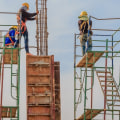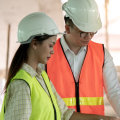Construction engineering has come a long way from traditional blueprints and manual labor-intensive processes. Today’s industry is being reshaped by cutting-edge technologies and forward-thinking design approaches that are revolutionizing how structures are imagined, built, and maintained. The fusion of digital tools, sustainable practices, and automation is not only making construction faster and more efficient but also smarter and safer. These innovations are empowering engineers, architects, and builders to push boundaries once thought impossible—turning bold ideas into reality with unprecedented precision and speed.
Smart Technology and Automation on the Rise
Automation and smart technology are transforming every stage of the construction lifecycle. Drones now survey large plots of land with exacting accuracy in a fraction of the time it would take a human crew. Robotics are streamlining repetitive tasks like bricklaying and demolition, reducing human error and increasing safety. Additionally, 3D printing is beginning to make waves in the construction of small structures, even homes, with the ability to create complex forms using sustainable materials at reduced costs. These technologies improve productivity and minimize waste, aligning with modern goals of efficiency and environmental responsibility.
Digital Twins and Building Information Modeling (BIM)
Digital twins—virtual models that replicate real-world assets—are revolutionizing project visualization and management. Coupled with Building Information Modeling (BIM), digital twins allow engineers and project managers to monitor every detail of a structure’s design, construction, and eventual performance. These systems promote collaboration, reduce conflicts during the building process, and make maintenance planning more proactive and data-driven. BIM isn’t just for new builds; it's now used in whole home renovations in HHI, enabling teams to modernize existing structures with greater clarity and precision, ensuring every element—from electrical systems to structural reinforcements—is considered with foresight.
Sustainable Engineering and Eco-Innovation
Sustainability is no longer a trend—it’s a necessity. Green construction practices are at the forefront of modern engineering, with an emphasis on energy efficiency, water conservation, and low-impact materials. Innovations like solar-integrated building components, carbon-sequestering concrete, and adaptive building envelopes are redefining how buildings interact with the environment. Engineers are now designing with climate resilience in mind, ensuring structures can withstand extreme weather events while minimizing their ecological footprint. These environmentally responsible solutions not only meet regulatory requirements but also appeal to a growing number of eco-conscious clients and investors.
AI, Data, and Predictive Analytics
Artificial intelligence and big data are further enhancing decision-making in construction engineering. Predictive analytics helps identify risks, forecast delays, and optimize scheduling before issues arise. AI-powered tools assist with material procurement, budget management, and even on-site safety by analyzing behavioral patterns and alerting teams to potential hazards. This digital insight ensures smarter resource allocation and boosts project outcomes across the board. Real-time monitoring systems, connected via IoT (Internet of Things), provide a constant feedback loop that improves performance throughout a building’s lifecycle.
Conclusion: Engineering the Future
The construction engineering landscape is undergoing a dramatic shift, driven by innovation, sustainability, and digital transformation. From AI-powered planning tools and sustainable materials to robotics and digital modeling, each advancement builds on the next, reshaping what’s possible in the built environment. As these technologies continue to evolve, so too does the potential to create spaces that are not only functional and beautiful but also resilient and intelligent. In today’s fast-moving world, embracing these modern marvels isn’t just an advantage—it’s essential for building the future.






